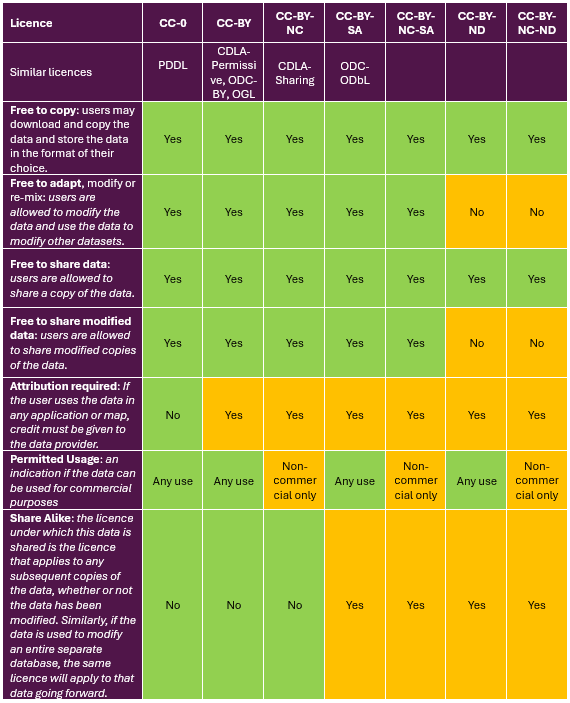Selecting the Right License for Geographic Data
Publishing your data to an open data site and making it available to users is great. But do you have the right data user license to go with it? This blog post explains why it is important to do so and the licensing options that are available for you to choose from.
Introduction
Over the past year, I have had the privilege of serving as the chairperson of the Overture Maps Foundation’s addressing task force. As part of Overture’s initiative to build a high-quality, global geospatial database, the addressing task force has successfully integrated more than 400 million address records from 33 countries. Having incorporated available national level addressing databases, we are now focusing on sub-national data sources to create a complete and up-to-date addressing database.
Currently, there are over 2,900 open and available addressing databases worldwide. However, many of these datasets do not meet Overture’s licensing requirements. Some data licenses are too restrictive (e.g., prohibiting commercial use), while others lack a formal license entirely. This post explores the importance of data licensing and highlights the types of licenses that data providers can use.
Why Data Licenses Matter
As the owner of an open dataset, you have the right and responsibility to define how your data can be used and by whom. A data license serves as a statement outlining how the dataset may be used and specifies the responsibilities—if any—of the data user. Ambiguity in a data license can create confusion for users and challenges for providers. Without a clear license, potential users may hesitate to adopt your data. Conversely, a clear and explicit license can help avoid these issues.
Fortunately, many standard open data licenses are available, eliminating the need to draft one from scratch. Using a standard license simplifies the process for users to assess whether the license aligns with their intended use. Customized licenses, while sometimes necessary, should generally be avoided as they are harder to interpret. The more complex and customized the license, the less likely users will fully understand it, potentially deterring adoption.
Standard Open Data Licenses
Before selecting a data license, consider the following questions:
- Do I need to restrict how the data can be used? If so, why?
- Does the license make it easy for users to adopt and utilize the data?
- Can a standard license meet my requirements or is a custom license truly necessary?
To answer the last question, it is good to know what standard data licenses are available.
Data licenses differ based on permitted uses and user responsibilities. The most permissive licenses, such as Creative Commons (CC0) or Public Domain Dedication and Licence (PDDL), impose no restrictions on how the data can be used and require nothing from the user. Slightly less permissive licenses, like Creative Commons Attribution (CC BY) license or Open Government Licence(OGL), also impose no use restrictions but require users to acknowledge the data source. These licenses are acceptable to both Overture and Esri’s Community Maps Program, including Esri Canada.
Open data can still include licenses that restrict certain uses. For instance, some providers prefer their data not to be used for commercial purposes or impose conditions on sharing or modifying the data. The table below provides an overview of the restrictions and permissions associated with different standard open data licenses. It should be used as a general guide. Follow the links to each license and read through the entire license to determine if it meets your needs.

Disclaimers
A disclaimer is often mistaken for a data user license. A disclaimer protects the data provider but does not indicate the allowable uses of the data or any of the data user’s responsibilities. An open data license often contains a disclaimer, but a disclaimer never contains a license. Disclaimers on their own typically outline that the data is offered "as is," without warranties regarding its completeness, timeliness or accuracy. They often state that the publisher is not liable for errors, omissions or any consequences resulting from the data's use. Disclaimers are crucial to manage user expectations, reduce legal risks for the data provider and encourage informed decision-making when relying on the data.
Conclusion
An open data site should have both a disclaimer and a data user license, sometimes in the same block of text. Regardless, open data should have one and only one data license and disclaimer that applies to all the content within the open data site. If there are different licenses applying to the site and the specific data layers hosted on the site, it can lead to confusion about what licenses apply to what content. If you have an existing open data site, the license should be clearly linked to the front page of your open data site as well as from the item description of each data layer being provided.
For more information
Check out both Open Data Commons and Creative Commons for complete standard open data user licenses and related tools to assist you in determining which license to use.